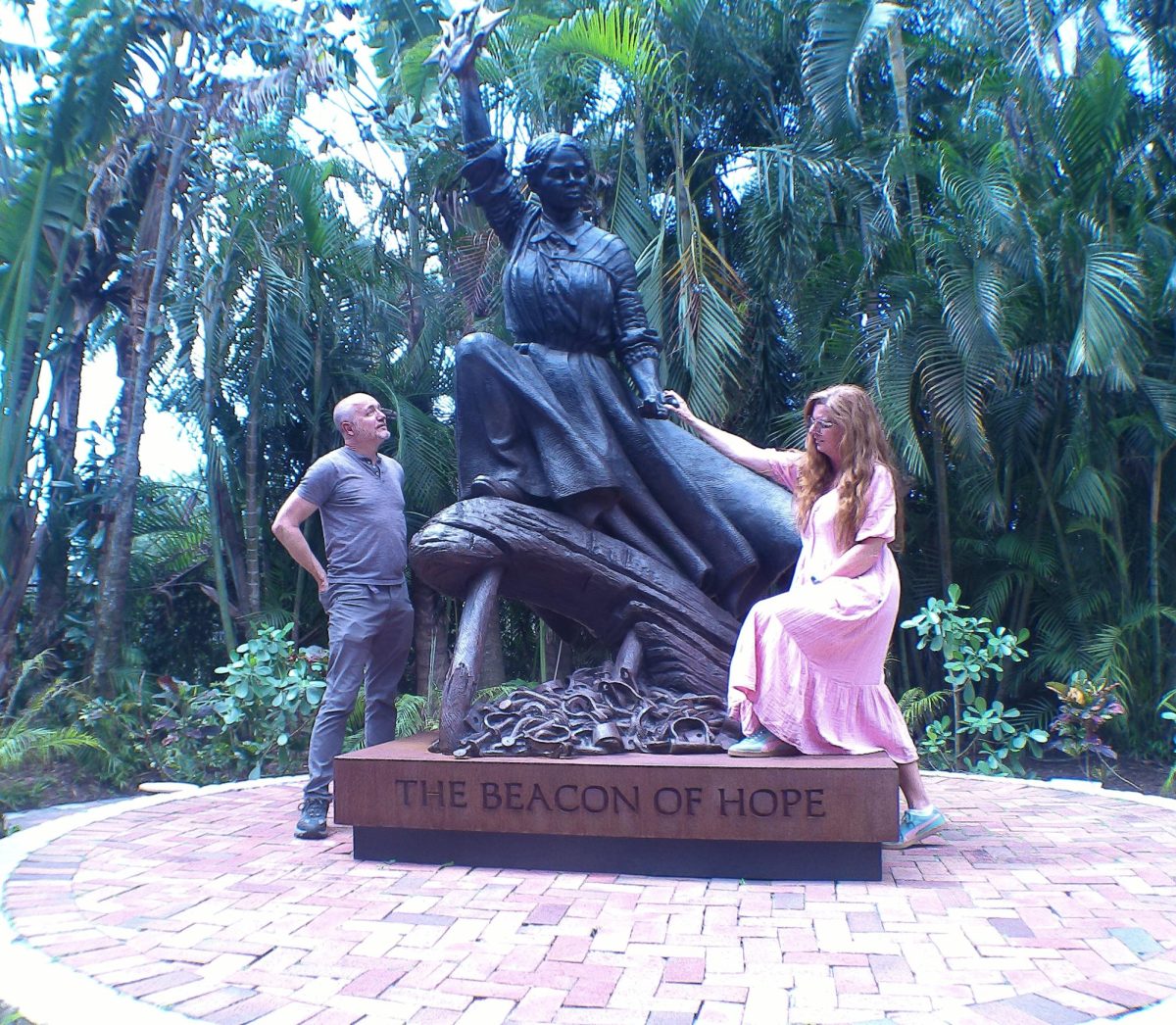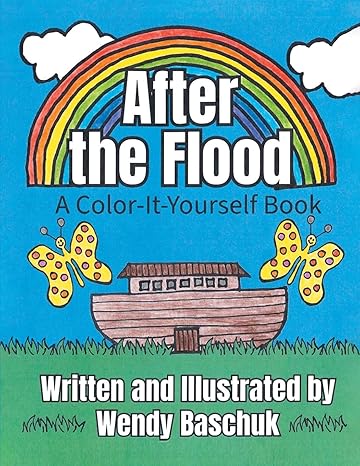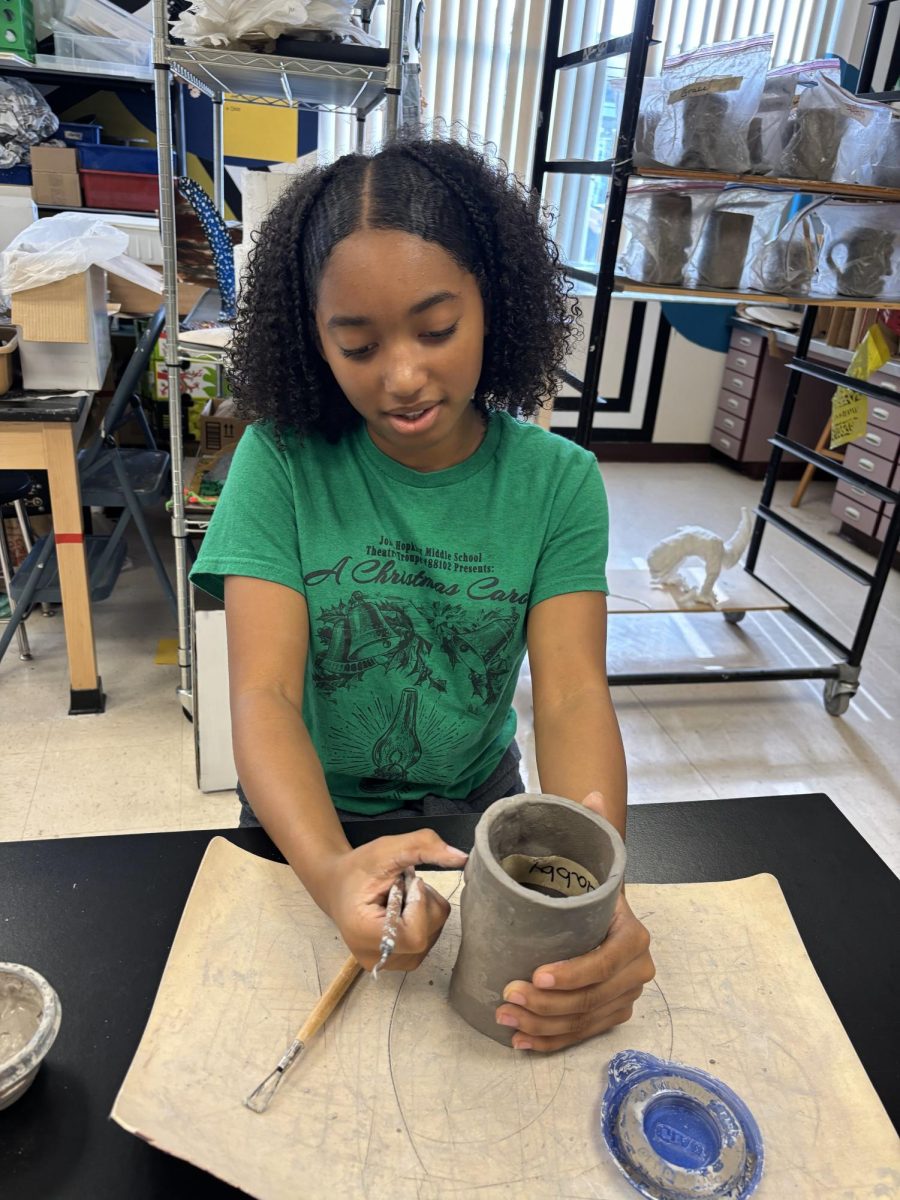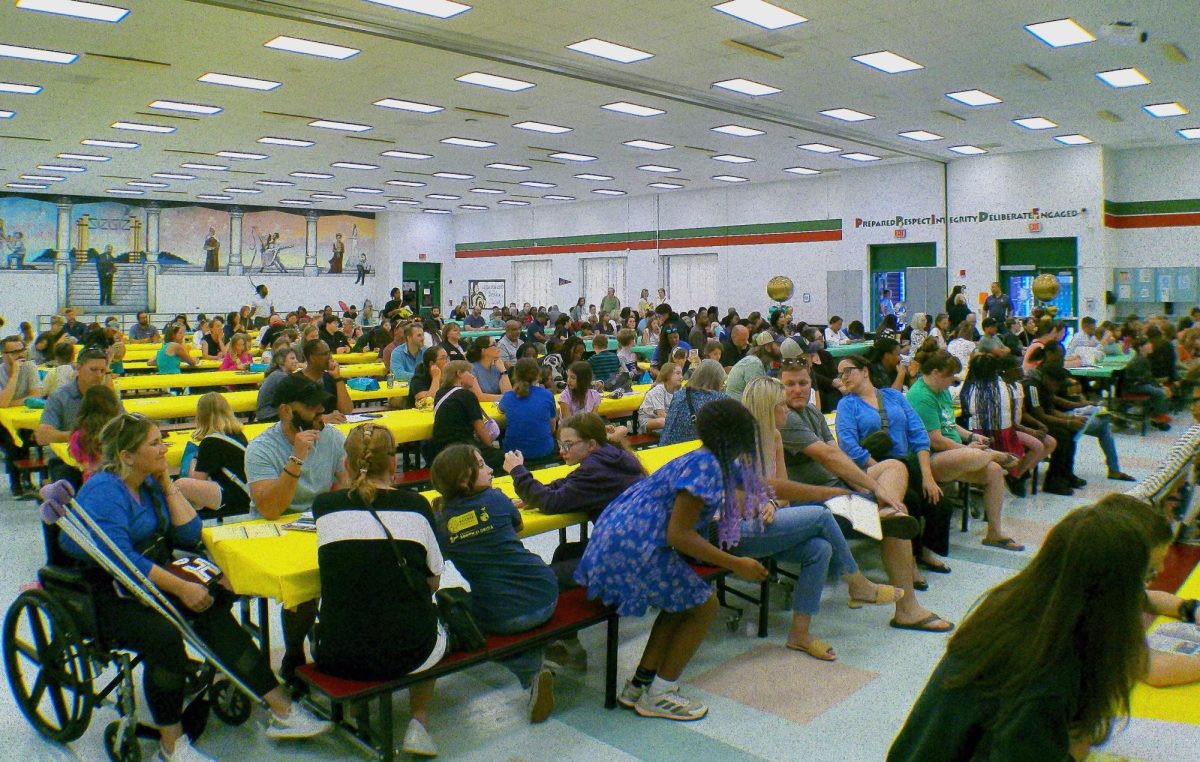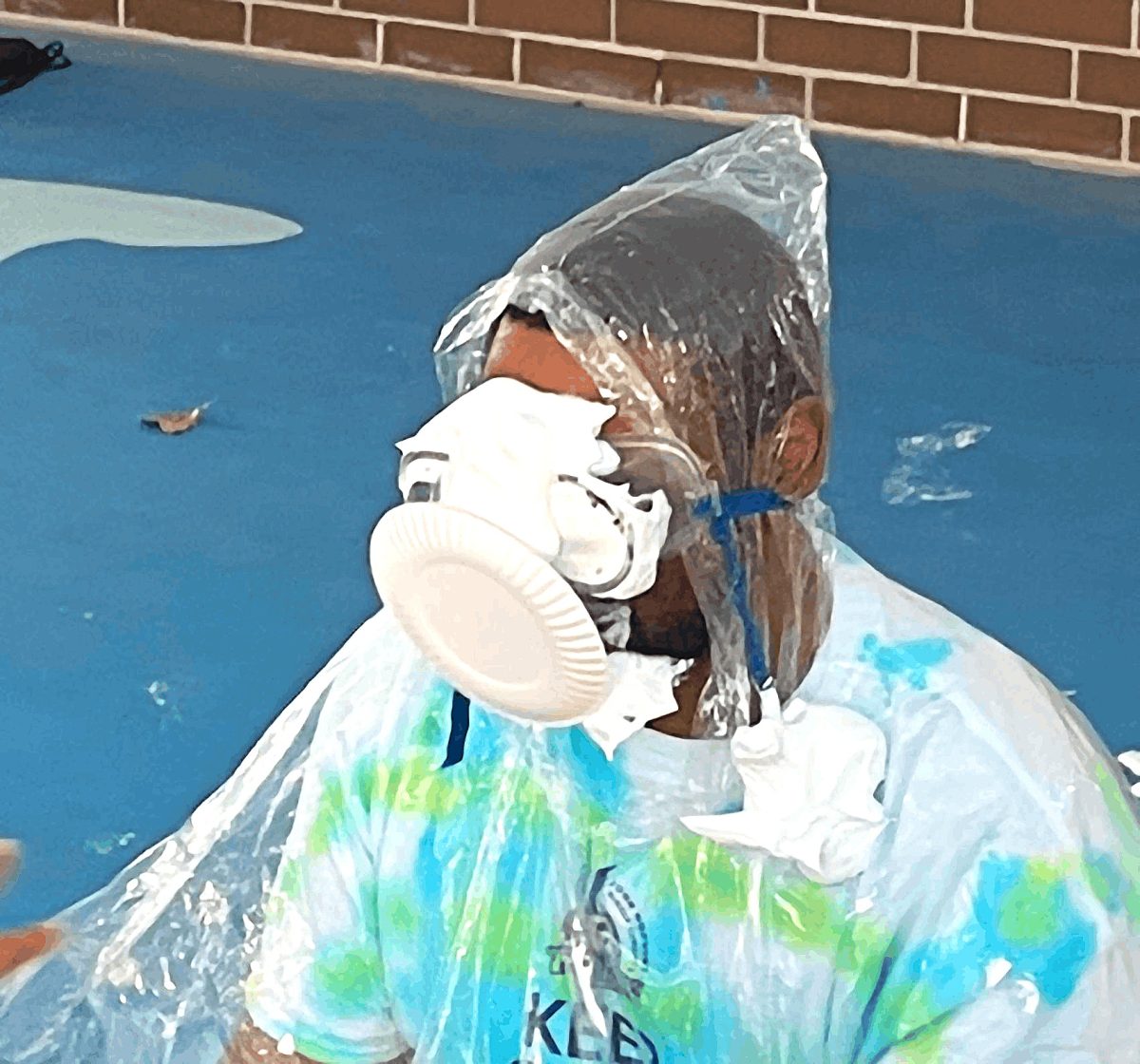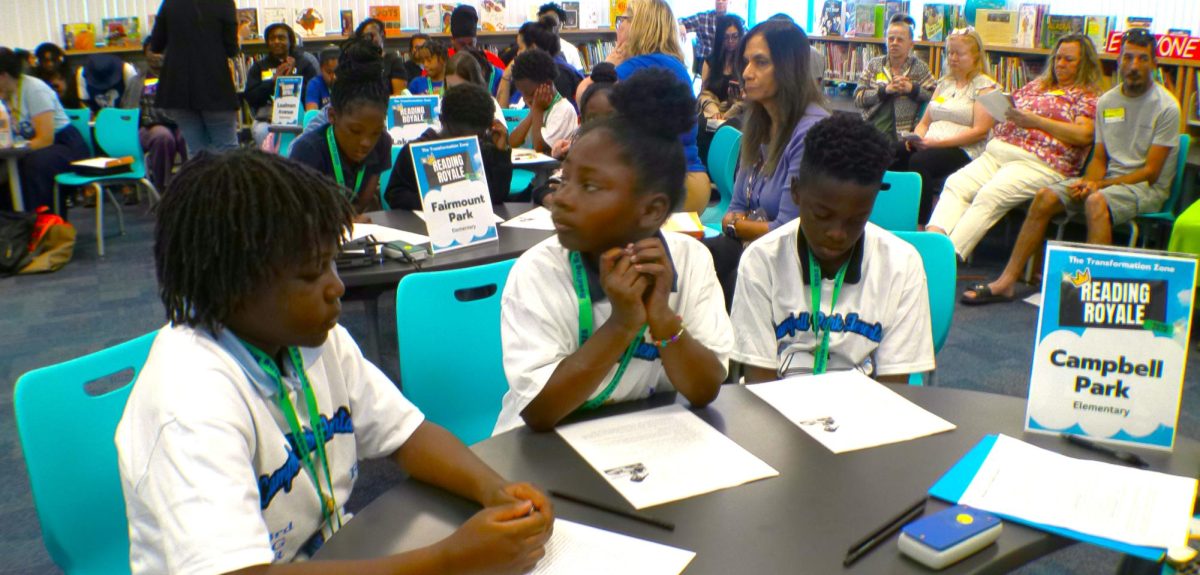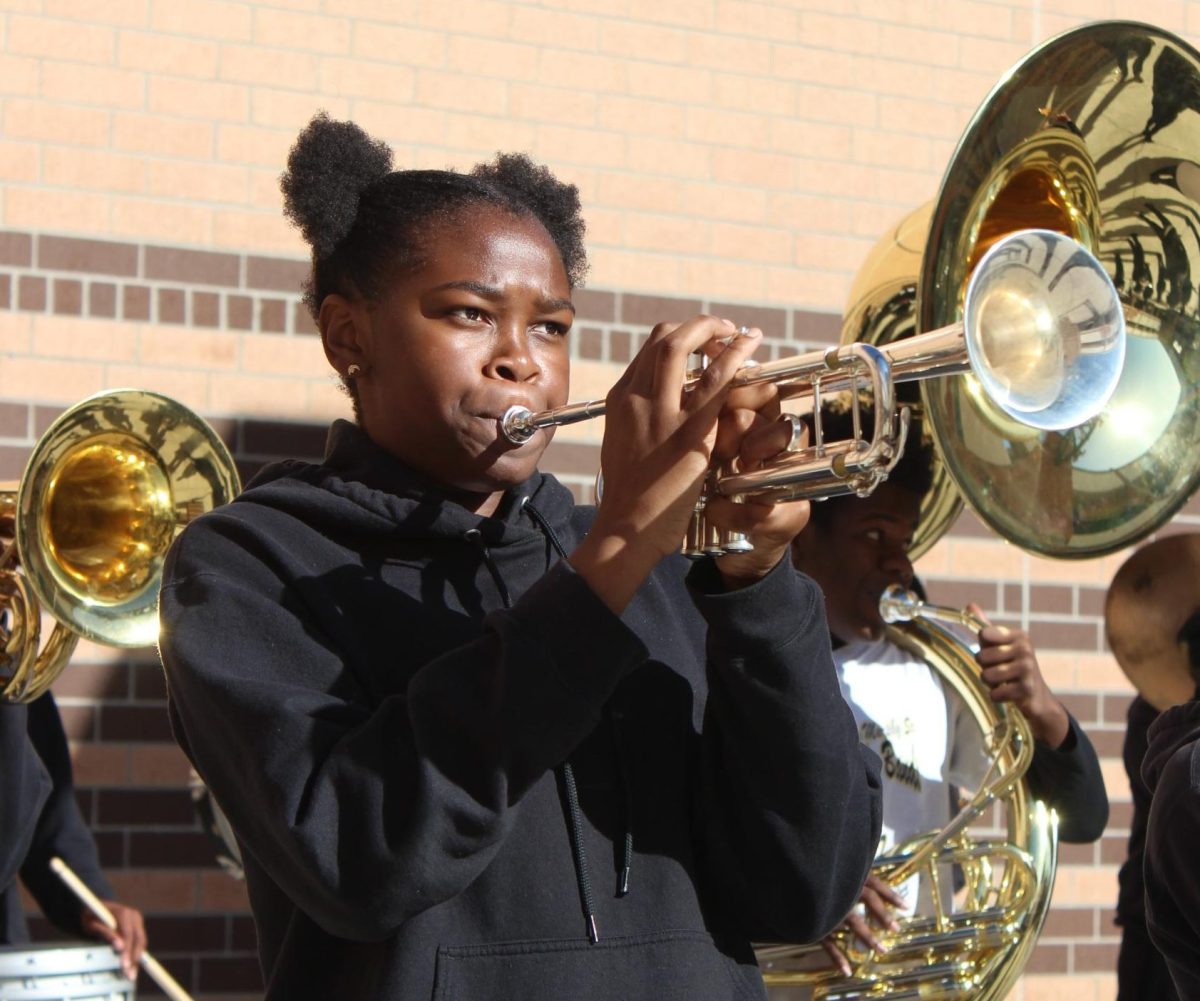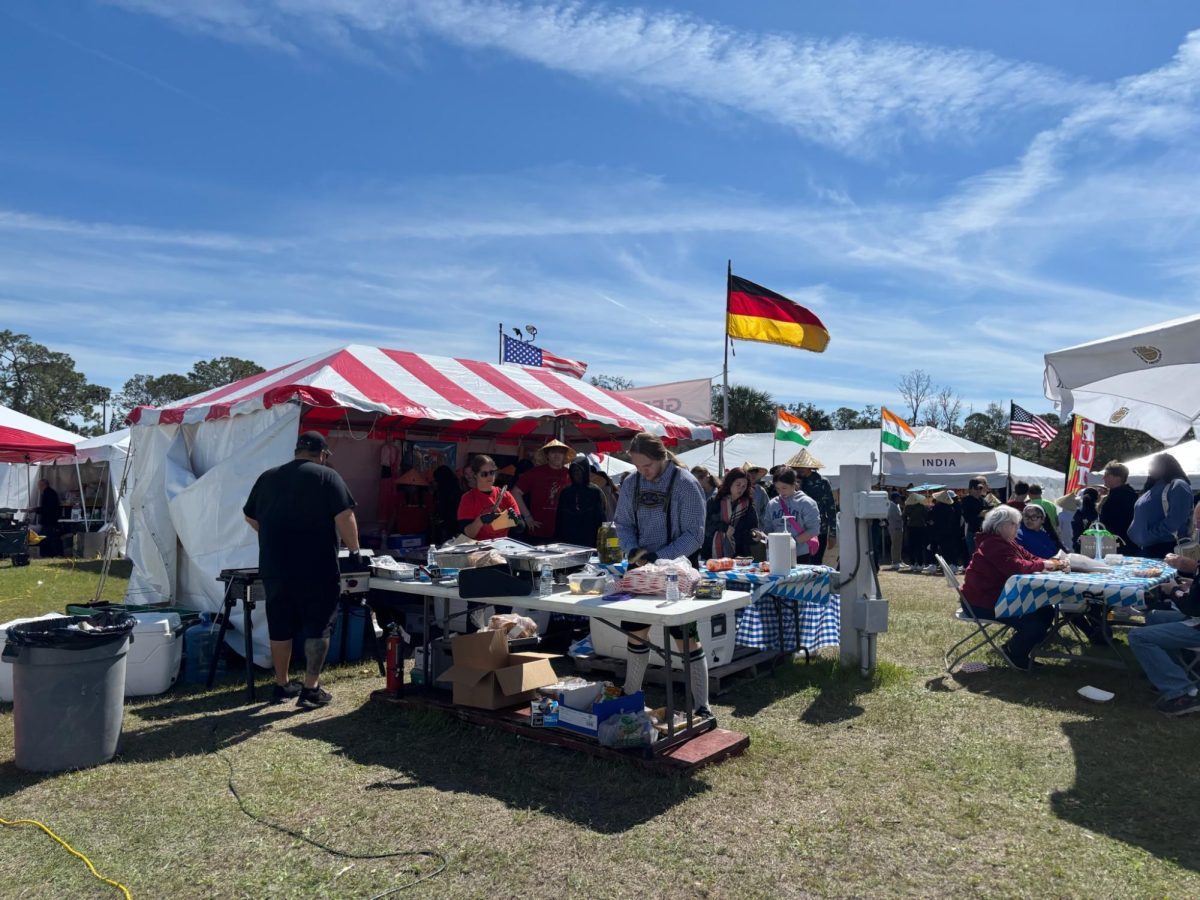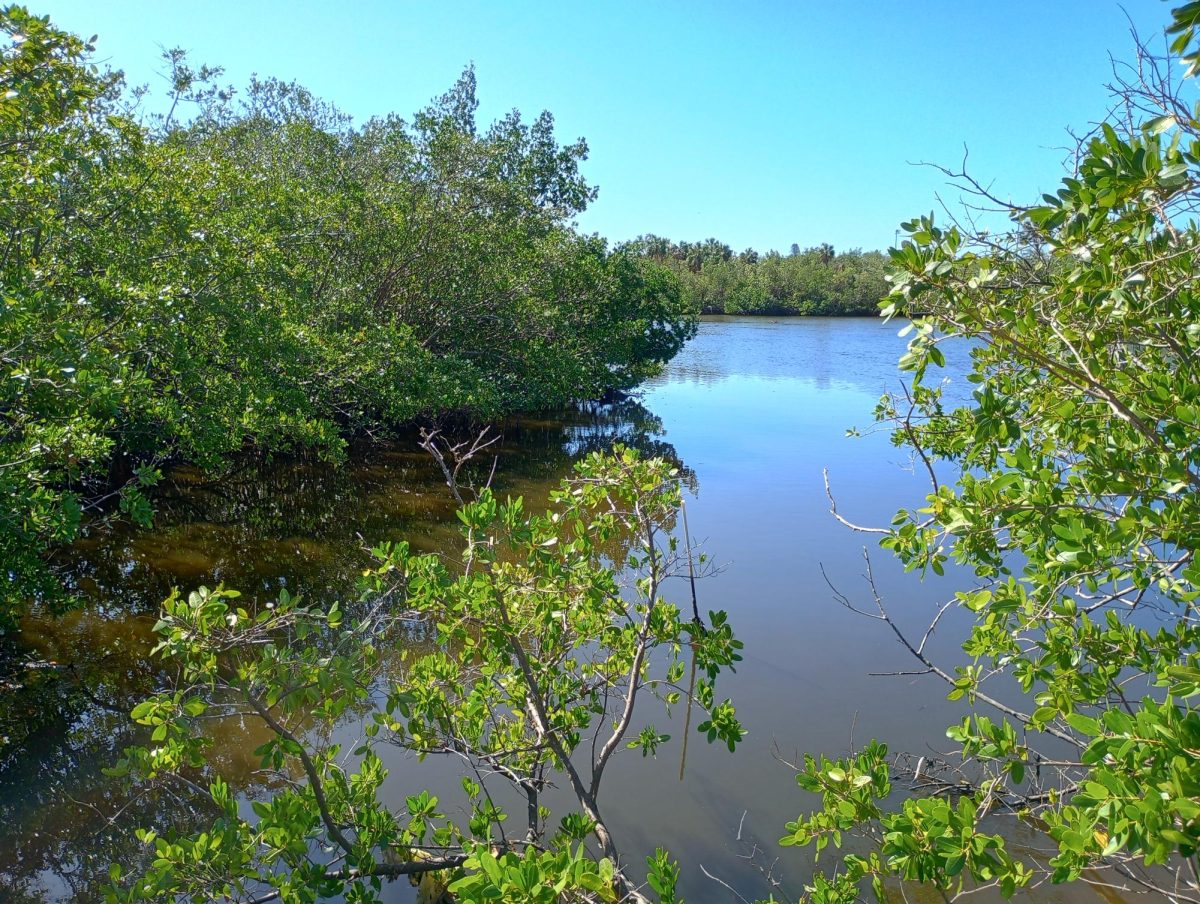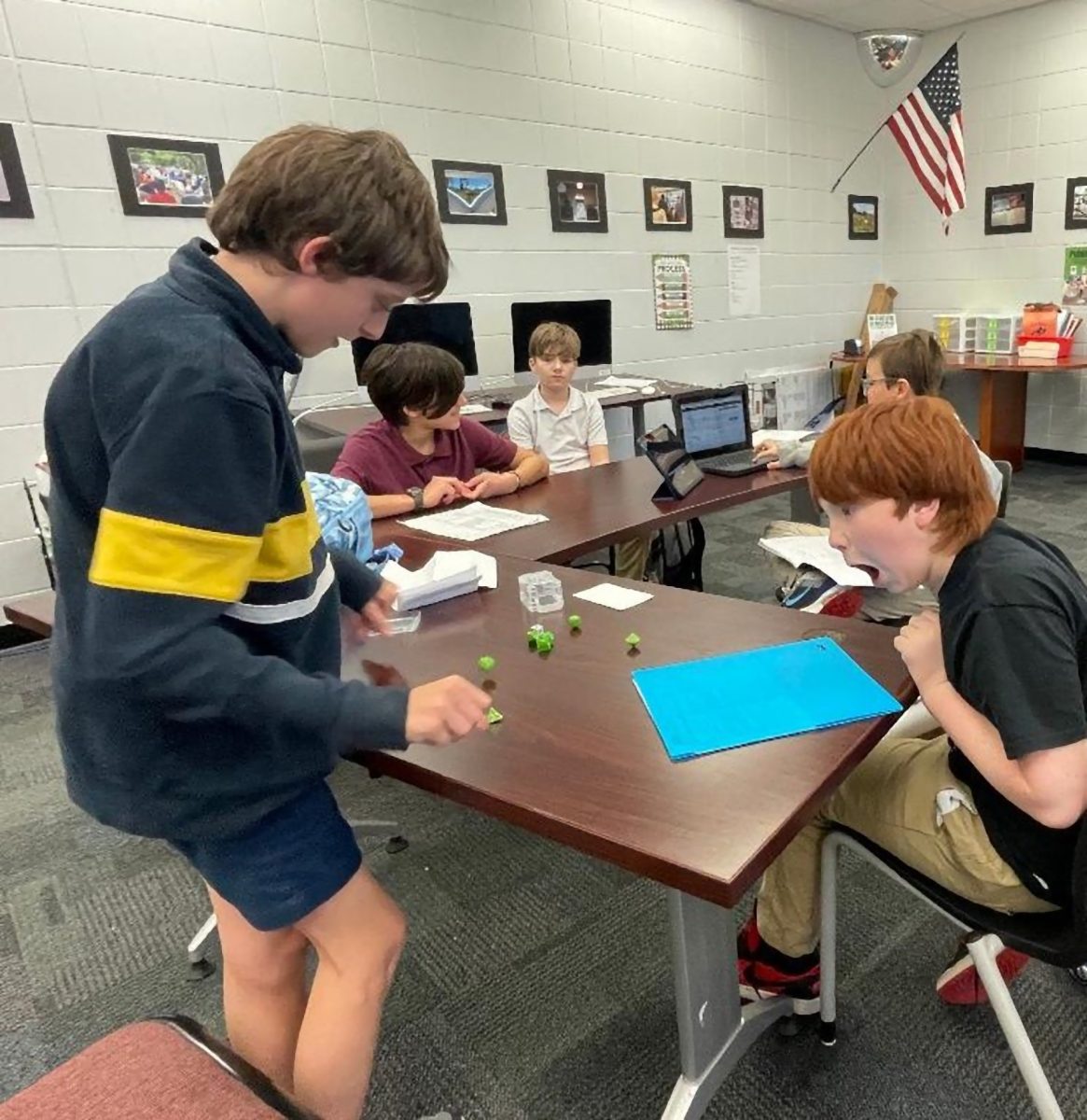An award-winning sculptor recently visited a local museum to talk about his work of art that centers on an esteemed historical figure: Harriet Tubman.
Wesley Wofford’s bronze statue of Tubman currently is on display in the Legacy Garden at The Woodson African American Museum of Florida.
The museum hosted a series of events featuring the Georgia-born sculptor talking about his creation, “Harriet Tubman: The Beacon of Hope.”
Wofford kicked off the events Friday with a presentation at the museum for Journeys in Journalism scholars from Melrose, John Hopkins, and Lakewood schools.
Wofford was preceded by museum executive director Terri Lipsey Scott, who gave a brief history of the museum and Tubman’s story.
An abolitionist who led 70 enslaved people to freedom on the Underground Railroad between 1850 and 1860, Tubman was a mighty woman who stood just over five feet tall, Scott said.
“Can you imagine someone of that stature being able to corral a group of people to bring them to freedom?,” she asked.
During his presentation, Wofford detailed the materials and the process he used to create the sculpture.
The statue is a13-foot-tall, detailed bronze alloy replica of Tubman wearing a dress and standing on a broken oxen yoke in a sea of broken shackles.
Her facial features and body are based on pictures of her and what her descendants look like.
Wofford said the shackles are based on real models and the sculpture took 14 months to finish.
Tubman holds a key in her left hand, “so she represents unlocking inner strength,” he said.
Wofford said the name “The Beacon of Hope” comes from thinking of the important meanings in what Harriet Tubman did in the world and how a beacon gives hope to others.
See broadcast of this story on this week’s JHop Morning Show here.

